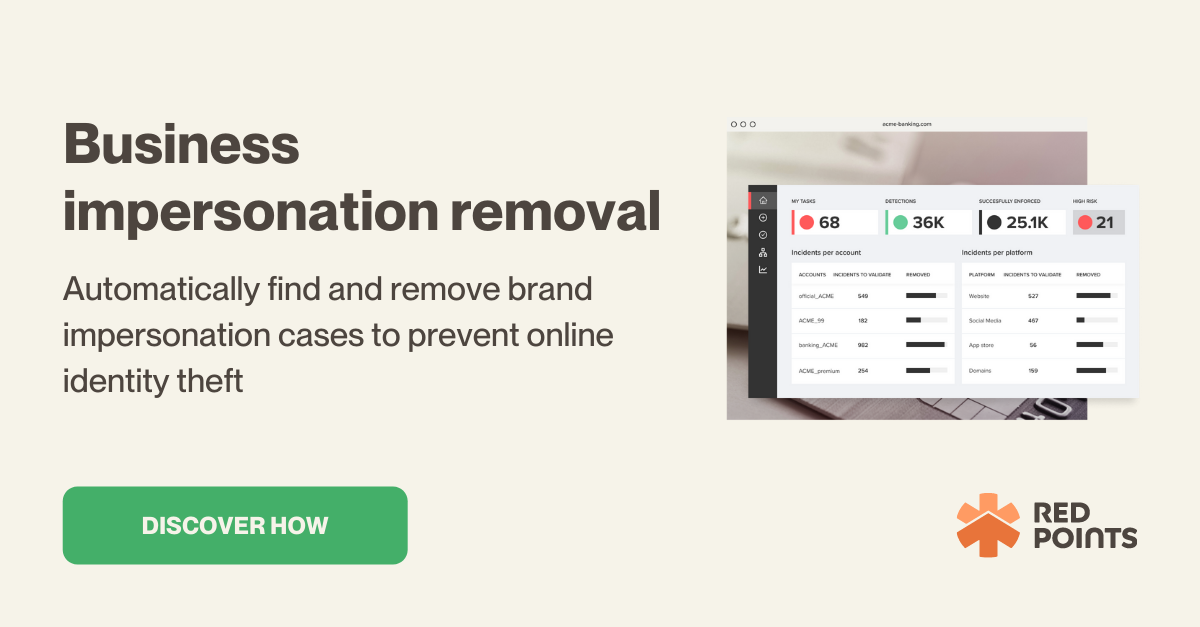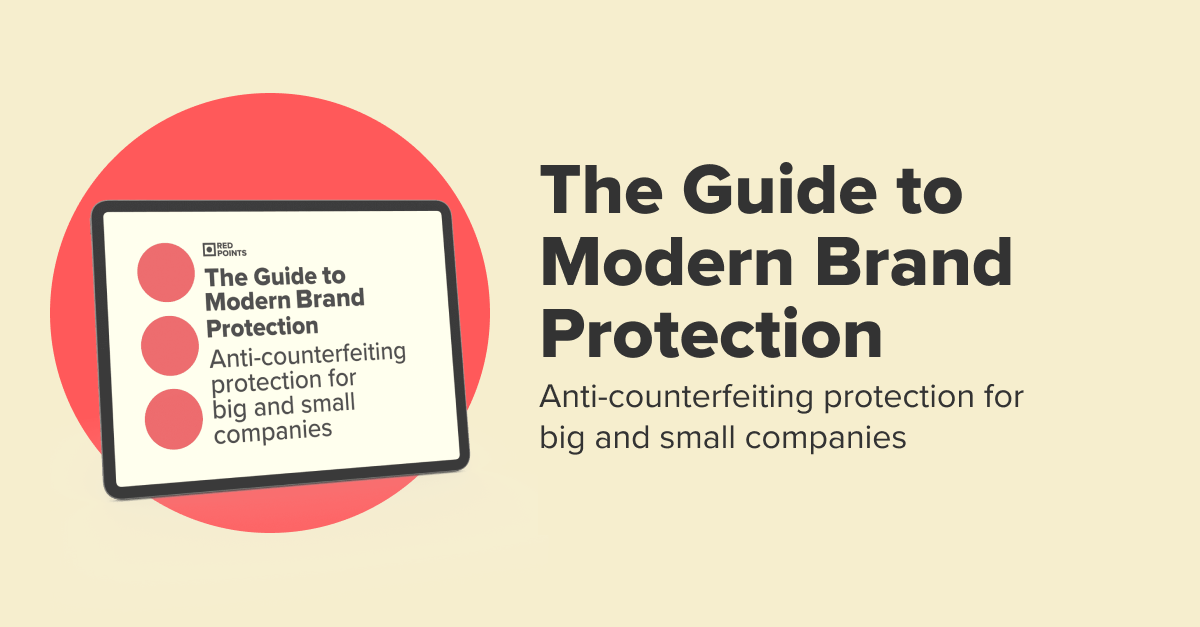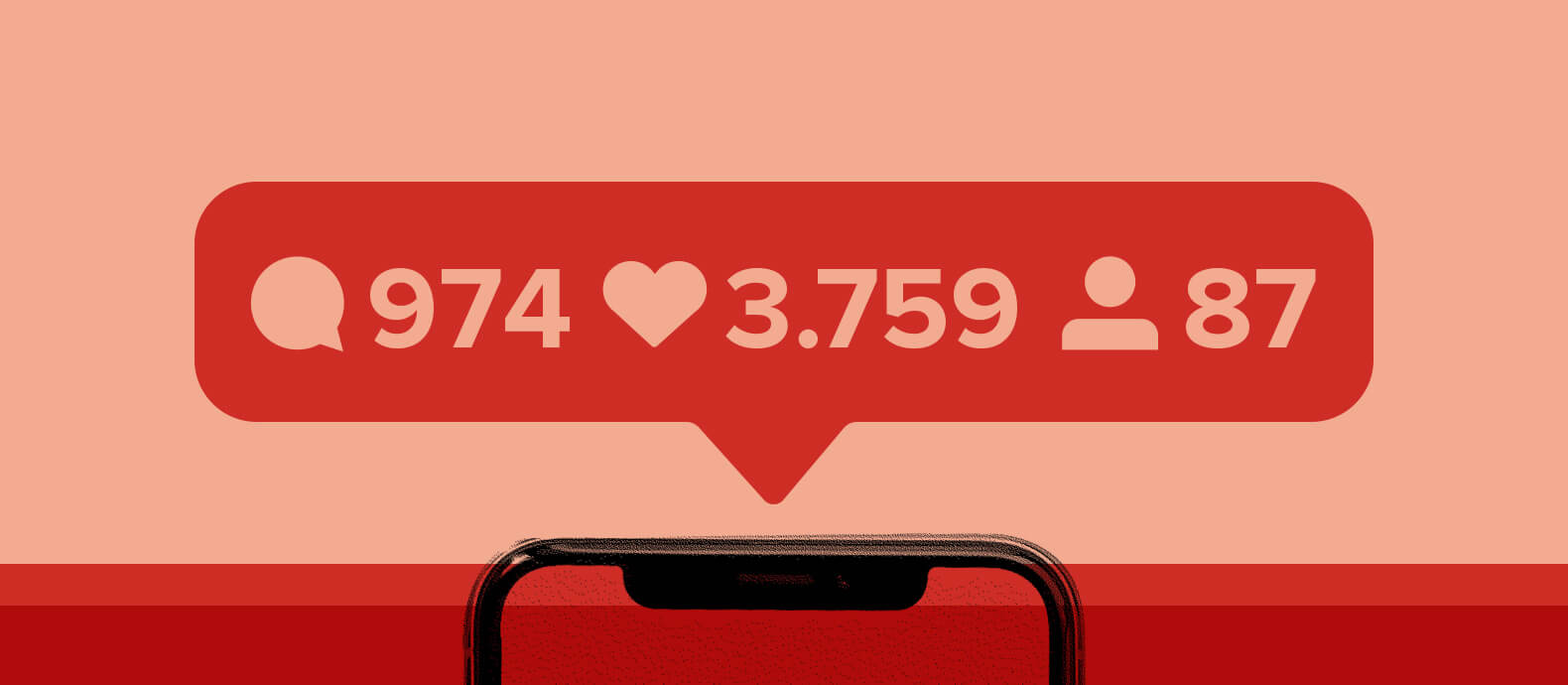Social media has tremendously amplified the options for ecommerce and brand owners to conduct business. From increasing revenue, learning about the competition, accessing new marketing channels, engaging with customers and developing a brand voice, social media has the power to connect businesses and consumers. The influence of social media has continuously increased over the last few years and social commerce is expected to reach around 80 billion US dollars in the US alone in 2025.
Given the vast number of platforms, you might ask yourself which social media accounts you should have for your business. This article provides an overview of the must-have social media accounts for business. We talk about each platform’s features, its pros and cons, as well as potential threats brand owners should be aware of.

Which social media accounts do you need for your business?
With roughly 2.91 billion monthly active users at the end of 2021, Facebook is the dinosaur in the social media realm. The vast user base and countless features for business make Facebook the number one social media platform for e-commerce and brand owners. A Facebook business page is similar to a business website and enables companies of all sizes to share important company information and updates with the public.
The strength of the platform lies in the combination of provided business features like advertising, an online shop and analytical tools, with the ability for businesses to communicate with users and customers. Therefore, ecommerce businesses can boost their visibility, reputation and sales through a presence on Facebook.
Pros:
- Several options to interact with users (live videos, Facebook groups, Messenger)
- Targeted advertising
- Various ecommerce functions (online shop; integration of other ecommerce platforms like Shopify)
- In-depth analytics
Cons:
- Some features are complicated and need additional training
- Difficult to gain visibility and followers for small businesses
- Ads are costly
What to look out for
While Facebook plays an important role in linking businesses and consumers, it is also highly attractive for scammers that execute a number of vicious attacks on the platform. These attacks are either fulfilled to discredit your business or to maliciously profit from it through impersonation.
Fake reviews are a common threat that falls into the first category which is either executed by a competitor or a malicious third party to harm the reputation of your brand. Impersonation attacks include scam ads and fake profiles that copy the intellectual properties of your business to make consumers believe that they are buying from the real brand. Both are created to sell counterfeit products or charge for purchase without sending the product.
Owned by Facebook’s parent company Meta, Instagram is a great marketing tool for businesses that share visual content for their audience. You can post photos, stories and live videos that promote your products and services as well as boost your brand image. The social media site offers a variety of functions to interact with users, advertise and even sell products on Instagram through an Instagram business account.
Pros:
- Usage is easy and fairly intuitive
- Ability to run Facebook ads simultaneously on Instagram
- Highly valuable for brands that want to address a younger audience
Cons:
- Content creators need to post consistently to gain visibility
- Highly prone to impersonation attacks
What to look out for
Instagram is similarly vulnerable for infringements and identity theft like Facebook. The attacks executed on Instagram usually always include a form of intellectual property infringement. Copyright infringements and trademark infringements appear in the form of ad scams and fake profiles that lure customers into buying fake products at a very cheap price. IP infringements also include posting videos that include copyrighted music and reposting other users’ photos or designs.
YouTube
YouTube has roughly 2.56 billion monthly users and is the second most visited website after its parent company Google. The platform connects creators and users worldwide and is designed to distribute creative video content. As such, it becomes more important as a marketing tool since users are diverting to watch more videos instead of static content.
YouTube is especially valuable for businesses that are engaged in entertainment, creative or educational fields. Creating a YouTube channel for your brand offers a way to create lively insights into your business and create closer ties with your community than with other social media platforms. However, creating high-quality video content is strenuous and building a following can take years.
Pros:
- Videos are likely to have a higher conversion rate
- Chance to build a loyal community
- Videos can be used to complement other marketing strategies
Cons:
- Users demand high-quality videos
- Video production is an extensive and time-consuming process
- Ranking is difficult
What to look out for
The big issue on YouTube for businesses and creators is certainly copyright infringements. As a rule of thumb, everyone who is uploading a video on YouTube that contains background music, video footage, or other original works of a creator without asking for permission is infringing copyright. However, there is an exemption called the fair use doctrine which allows the usage of copyright-protected material without the copyright owner’s permission under certain circumstances.
TikTok
Founded in 2016 in China, TikTok had explosive growth after entering the global market in 2018, reaching 1 billion monthly users as of January 2022. The app is especially popular among the younger generation and designed for short videos that can be shared on other social media platforms like Instagram. Unlike Instagram or YouTube, TikTok doesn’t require high-quality content. What’s most important is posting authentic content in a self-expressing, creative and fun way.
Ecommerce and brand owners can place advertisements on TikTok. The app offers four types of ads that have different purposes and outcomes depending on the type of campaign.
Pros:
- Beneficial for brands who want to connect with the Gen Z demographic
- Cheaper ads than on other social media platforms
- Chance to market your brand in a fun, interesting way
Cons:
- Concerns around the platform‘s data and security policies
What to look out for
Like YouTube, videos uploaded on TikTok often contain copyright infringements. The social media site has a music library where creators can freely use copyrighted and licensed songs. However, users can also choose to include sounds outside the library which often leads to copyright violations. Additionally, copyright infringements on TikTok occur when users advertise a product using a brand’s IP without authorization or when reposting other users’ content.
The purely visual-oriented social media site allows users to “Pin” (save) pictures and videos, organize them by category, and shop. Although Pinterest has fewer monthly users (around 444 million) than Facebook or Instagram, the platform creates a strong buying behavior among users. Shoppers on Pinterest have 85% bigger baskets than shoppers on other platforms.
Pinterest is great for businesses engaged in craft or DIY projects, food, fashion, home decor or health-related fields. Brands can use the site to boost their exposure to new customers as many users discover new brands and products through Pinterest.
When using Pinterest for your business you need to create and share visually attractive and engaging Pins. Successful pins usually show how to use a product or service and make the user want to learn more. Brands can advertise on the platform through Pinterest ads or promoted Pins.
Pros:
- Promoted Pins can be free advertising when repinned by users
- Optimal for presenting visually engaging content
- Good for driving traffic
Cons:
- Not ideal for all business areas
- Consistent posting/engagement on the platform is time-consuming
What to look out for
When users allow their content to be shared as a Pin on Pinterest, their images can be saved, shared and displayed across the platform. These pins direct users to the original site that owns the content. However, these original pins can be “stolen” which means copyright infringement.
This occurs when users upload screenshots of popular pins or images from their own files that contain intellectual property from other brands. Thereby, users can change those pins and link them to their own website which is an infringement that harms businesses and creators.
LinkedIn is the best social media platform for professional networking. It is mainly designed for recruiting top talent and providing a platform for businesses to present themselves as industry leaders and promote their business. In that sense, business owners can rather expect to find business partners than new customers.
Pros:
- Ideal for finding and recruiting qualified talent
- Great for promoting your business as an industry leader
- Good for sharing company information and business-related content
Cons:
- Not designed for e-commerce
- Limited user base
What to look out for
While other social media platforms are prone to counterfeiters or ad scams, LinkedIn is used by impersonators who steal the identity of brand executives or employees for fraudulent purposes. By doing so, scammers send phishing emails to employees of a company to obtain sensitive customer information or data, such as social security numbers, passwords or bank details. Fraudsters can also seek to get a company’s banking information which can be used to obtain loans or credit cards in the company’s name.
Snapchat
The social media app was launched in 2011 and has roughly 557 million monthly users as of January 2022. It allows users to share short videos (Snaps), photos and chats that disappear after a short amount of time. Like TikTok, Snapchat is mainly popular among young people and therefore attractive for e-commerce and brand owners who want to target this age group.
As content is temporary on Snapchat, it doesn’t need to meet the same visual quality standards as on Instagram. However, it needs to be brief, engaging and radiate a fun atmosphere.
Businesses have three options to advertise on Snapchat. 10-second Snap ads usually include a call-to-action and information about your company and products. Sponsored geofilters allow users to send Snaps from specific locations to promote events or department stores. Sponsored lenses that apply thematic filters to videos or pictures.
Pros:
- Allows customer engagement on a personal level
- Option to share daily life at your business
Cons:
- The temporary quick-view approach can diminish the impact of your content
- Not ideal for every business
What to look out for
Due to the popularity of Snapchat, the platform is prone to the same attacks that are executed on similar social media sites. Brands should beware of intellectual property infringements and impersonation attacks.
On the social media and online news platform, users can tweet short messages (up to 280 characters) including videos, images, links, polls, graphics and more. Twitter is less visual-oriented than other platforms and is mostly used to distribute real-time information. Businesses can use the platform to improve their customer service and increase their brand recognition as well as sales.
It has turned out to be a great tool for customer care, to communicate directly with customers and respond to their issues and complaints. Likewise, businesses can use Twitter to promote sales and events.
Pros:
- Businesses can easily engage with customers
- Ideal for raising awareness about your brand
- Using hashtags can increase the visibility of your content beyond your follower base
Cons:
- User complaints can cause damage to a brand’s reputation
What to look out for
Twitter is another platform where infringements occur on a large scale. This is mostly due to the fact that stealing copyrighted content on Twitter is fairly easy and difficult to detect at the same time. The major problem is fake accounts that impersonate businesses by stealing their images, brand names and copying their content.
What’s next
Depending on the goals of your business, you now have the knowledge to decide which platforms are best for your brand and provide the most value.
Bear in mind that despite the huge benefits social media platforms offer, fraudsters execute attacks to get a piece of the pie on every platform. Reach out to us today if you want to learn how Red Points can help you protect your brand on social media.






